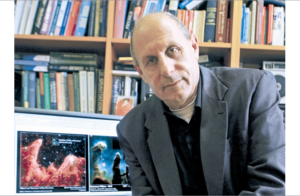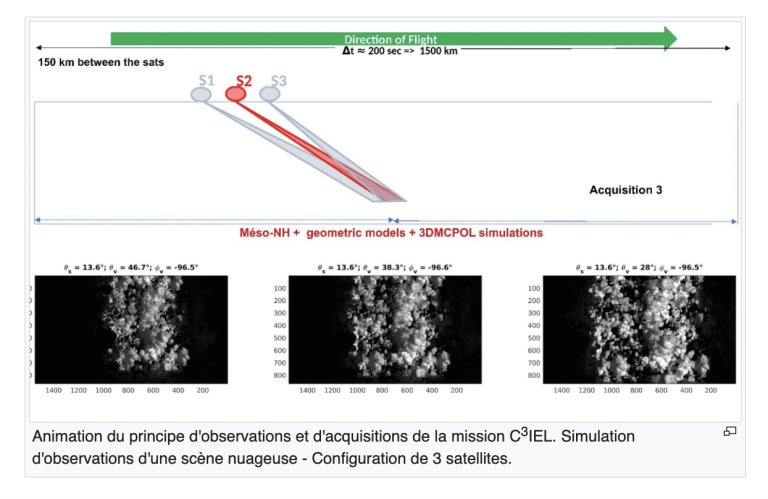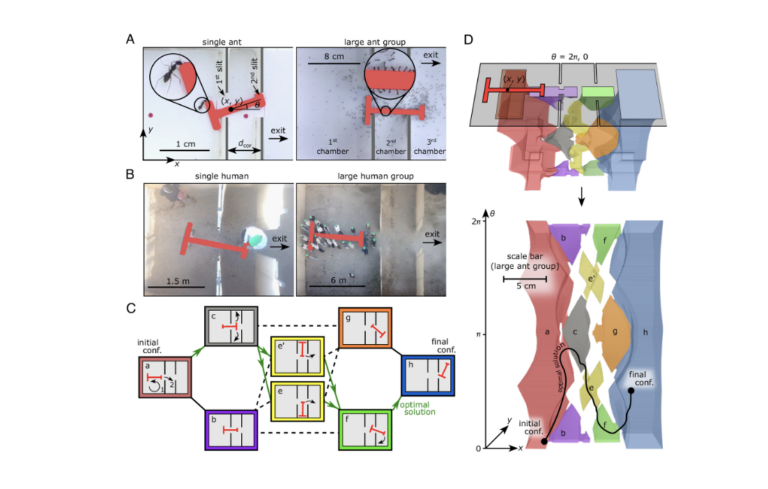L'UHJ et l'Open University (Israël) confirment la théorie d'Einstein : tous les photons se propagent à la même vitesse

[:fr]Cent ans après qu’Albert Einstein ait formulé sa théorie de la relativité, une équipe internationale vient d’apporter une autre preuve expérimentale. Dans un article qui devrait paraitre dans Nature Physics, des chercheurs de l’Université Hébraïque de Jérusalem et de l’Open l’University (Israël), de l’Université Sapienza de Rome et de l’Université de Montpellier (France), prouvent l’une des hypothèses de base de cette théorie : toutes les particules légères (photons) se propagent à la même vitesse, même si les photons ont des énergies différentes.
Les chercheurs ont analysé les données fournies par le télescope spatial Fermi de la NASA sur les temps d’arrivée des photons des sursauts de rayons gamma*. Ce satellite, lancé en 2008, est placé sur une orbite terrestre basse circulaire de 565 km pour une durée d’au moins 5 ans. Selon les chercheurs, « il s’agit d’une des meilleures mesures jamais effectuées sur l’indépendance de la vitesse de la lumière par rapport à l’énergie des particules légères ».
Ces travaux remettent en cause l’une des approches de l’unification des deux théories (relativité générale et théorie quantique) : la gravité quantique qui stipule que l’espace-temps est « granulaire ». Il existe d’autres théories, comme la théorie des cordes, qui visent à unifier les 2 théories en rendant les particules élémentaires étendues, sous la forme de cordes, tout en conservant un espace-temps continu, non granulaire.
Bien qu’elles soient aujourd’hui les piliers de la physique, ces deux théories sont encore incompatibles. Cette contradiction intrinsèque est partiellement basée sur le principe d’incertitude de Heisenberg, au cœur de la théorie quantique.

Le télescope Fermi, crédit photo NASA
« Lorsque nous avons commencé notre étude, nous ne nous attendions pas à obtenir une mesure aussi précise, » a déclaré le Pr Tsvi Piran, président de la chaire Schwartzmann à l’Institut Racah de Physique de l’UHJ et leader de la recherche. « Cette avancée peut nous orienter sur la façon de combiner la théorie quantique et la relativité. »
Selon le Dr David Elbaz, directeur de recherche au CEA : « cette étude fait suite, en apportant une précision supplémentaire, à un article paru dans Nature en 2009 à partir des mêmes observations du satellite Fermi, qui avait suscité un grand intérêt de la communauté scientifique. Cette étude est en fait une ré-analyse des mêmes données, avec une approche différente ».
Cette recherche a été soutenue par une subvention européenne ERC ; I-CORE (centres israéliens d’excellence en recherche) ; l’Agence spatiale d’Israël ; la Fondation des sciences d’Israël (ISF), le programme national des sciences naturelles de la Fondation de Chine (NSFC) et la Fondation Templeton.
Albert Einstein a été l’un des fondateurs de l’Université Hébraïque de Jérusalem à laquelle il a légué ses écrits, son patrimoine intellectuel et ses droits d’image.
Source en cours de publication
* Les Gamma Ray Bursts (GRBs) ou sursauts de rayon gamma sont des bouffées de photons gamma qui apparaissent aléatoirement dans le ciel. Ils sont situés à de très grandes distances de la Terre, et sont les événements les plus lumineux de l’Univers, après le Big Bang. (Source wiki)[:en]One hundred years after Albert Einstein formulated the Theory of Relativity, an international team has proposed another experimental proof. Researchers from the Hebrew University of Jerusalem, the Open University of Israel, Sapienza University of Rome, and University of Montpellier in France, describe a proof for one of the theory’s basic assumptions: the idea that all light particles, or photons, propagate at exactly the same speed.
The researchers analyzed data, obtained by NASA’s Fermi Gamma-ray Space Telescope, of the arrival times of photons from a distant Gamma-Ray Burst. The data showed that photons traveling for billions of years from the distant burst toward Earth all arrived within a fraction of a second of each other.

This finding indicates that the photons all moved at the same speed, even though different photons had different energies. This is one of the best measurements ever of the independence of the speed of light from the energy of the light particles. Beyond confirming the General Theory of Relativity, the observation rules out one of the interesting ideas concerning the unification of General Relativity and Quantum Theory. While these two theories are the pillars of physics today, they are still inconsistent and there is an intrinsic contradiction between the two that is partially based on Heisenberg’s Uncertainty Principle that is at the heart of Quantum Theory.
One of the attempts to reconcile the two theories is the idea of “space-time foam.” According to this concept, on a microscopic scale space is not continuous, and instead it has a foam-like structure. The size of these foam elements is so tiny that it is difficult to imagine and is at present impossible to measure directly. However light particles that are traveling within this foam will be affected by the foamy structure, and this will cause them to propagate at slightly different speeds depending on their energy.
Yet this experiment shows otherwise. The fact that all the photons with different energies arrived with no time delay relative to each other indicates that such a foamy structure, if it exists at all, has a much smaller size than previously expected. “When we began our analysis, we didn’t expect to obtain such a precise measurement,” said Prof. Tsvi Piran, the Schwartzmann University Chair at the Hebrew University’s Racah Institute of Physics and a leader of the research. “This new limit is at the level expected from quantum gravity theories and can direct us how to combine Quantum Theory and Relativity. »
The research paper, ‘A Planck-scale limit on spacetime fuzziness and stochastic Lorentz invariance violation,’ appears on the Nature Physics website (DOI 10.1038/nphys3270).
This research was supported by an ERC advanced grant; the I-CORE Israeli Centers Of Research Excellence; the Israel Space Agency; the joint Israel Science Foundation (ISF) and the National Natural Science Foundation of China (NSFC) program; and the Templeton Foundation.
Albert Einstein was a founder of the Hebrew University of Jerusalem. He bequeathed his writings, intellectual heritage and the rights to his image to the Hebrew University.[:]






